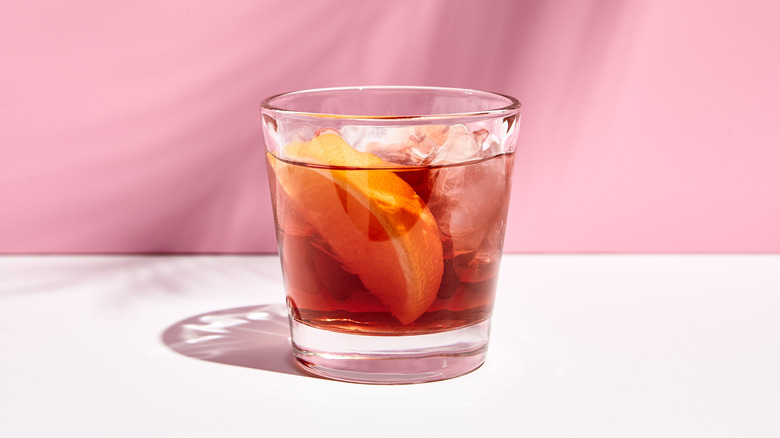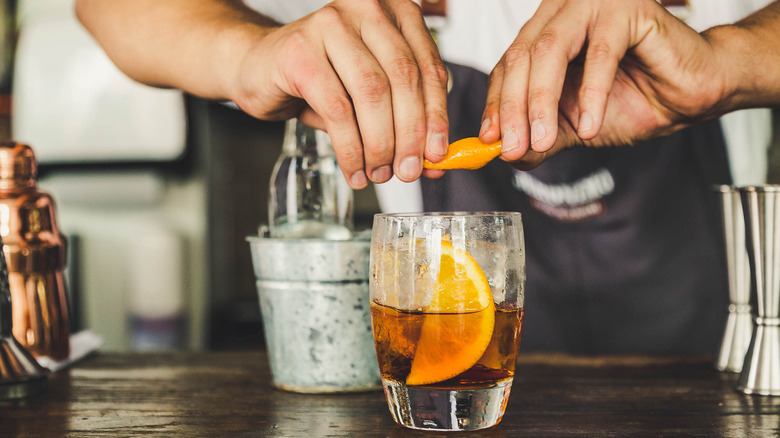The Origin Of The Negroni Cocktail
Every spring, our Instagram feeds seem to fill with sunny shots of lone, fiery-hued Negronis. The Negroni, as Conde Nast Traveler points out, has a status reminiscent of the Cosmopolitan in the 1990s. It's the cocktail, the trendy beverage to order at a bar. It's cultural shorthand for "I'm a sophisticated and worldly cocktail connoisseur," and it instantly channels Italian getaway vibes. So, where does this cooler-than-thou tipple actually come from?
The Negroni is as simple as it is delicious: equal parts Campari, sweet vermouth, and gin (via Liquor). According to Conde Nast Traveler, it originated in 1919, in a bar in Florence, Italy. A man named Count Camillo Negroni wanted a stronger punch-up to the Americano cocktail — sweet vermouth, Campari, and club soda — so the bartender replaced the club soda with gin. Negroni, who developed a taste for the strong stuff while in the United States working as a "rodeo clown," loved the drink so much he gave it his name.
The Negroni became a quiet little staple in Italian bars and restaurants, says Conde Nast Traveler, but according to Food & Wine, a few milestones in the beverage's history brought us to its current status as an iconic cocktail with mass appeal.
Why Negronis are so popular today
Food & Wine writes that Orson Welles made one of the first documented remarks about the Negroni in 1947 after trying it in Rome: "The bitters are excellent for your liver, the gin is bad for you. They balance each other." It's reported that the first variation on a Negroni appeared in Milan 20 years later, when a bartender accidentally swapped the gin for Prosecco and the customer loved the result. More tweaks followed, per Food & Wine, like a "white Negroni," made with Lillet Blanc and Suze instead of Campari and sweet vermouth, and, in 2010, a smoky barrel-aged Negroni.
According to Conde Nast Traveler, a revival of gin and bitters in cocktail culture led to greater access to these ingredients, which led to more Negronis on cocktail menus. Campari saw the potential in boosting the presence of a cocktail in which it was a key player and organized promotions like declaring 2011 "The Year of the Negroni." In 2013, Campari collaborated with alcohol publication Imbibe to create "Negroni Week," during which mixologists and bartenders compete to create the best version of the drink (via Food & Wine). A portion of the profits from those Negronis gets donated to charity (via Negroni Week's website).
Thanks to events like these, the ongoing popularity of cocktails made with gin and Italian bitters, and perfect Instagram shots, it looks like the Negroni craze is here to stay.

